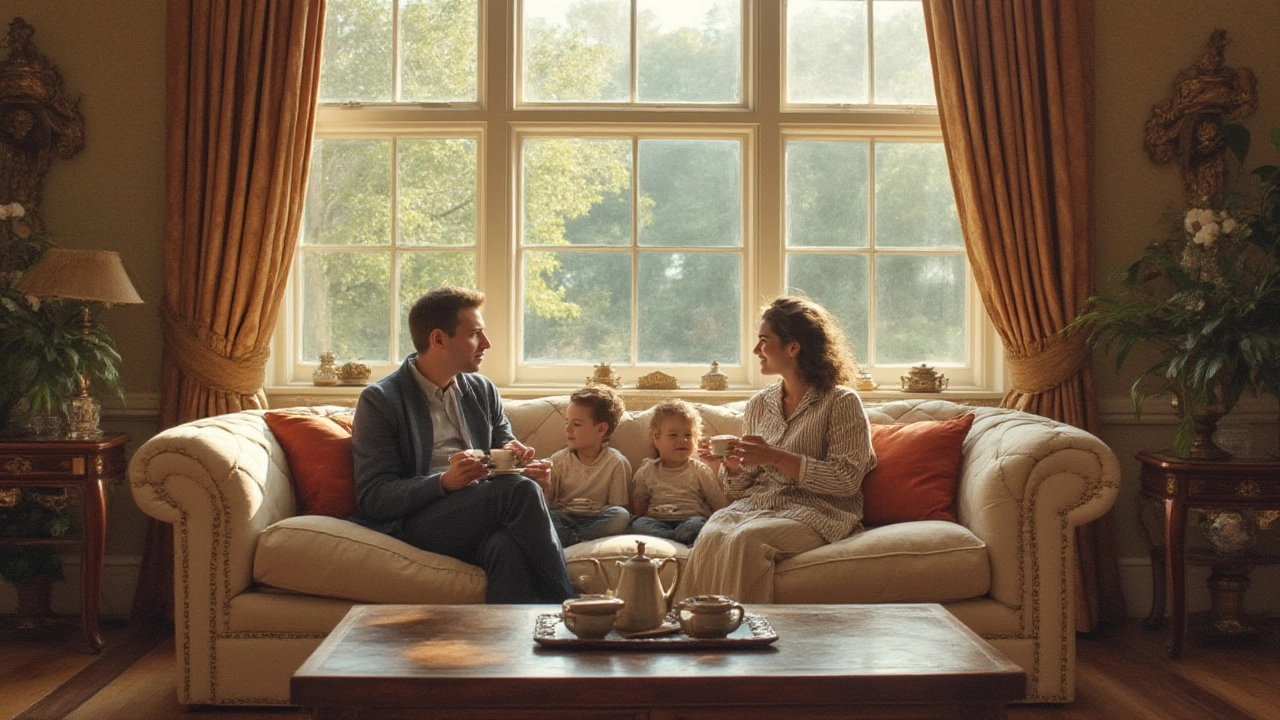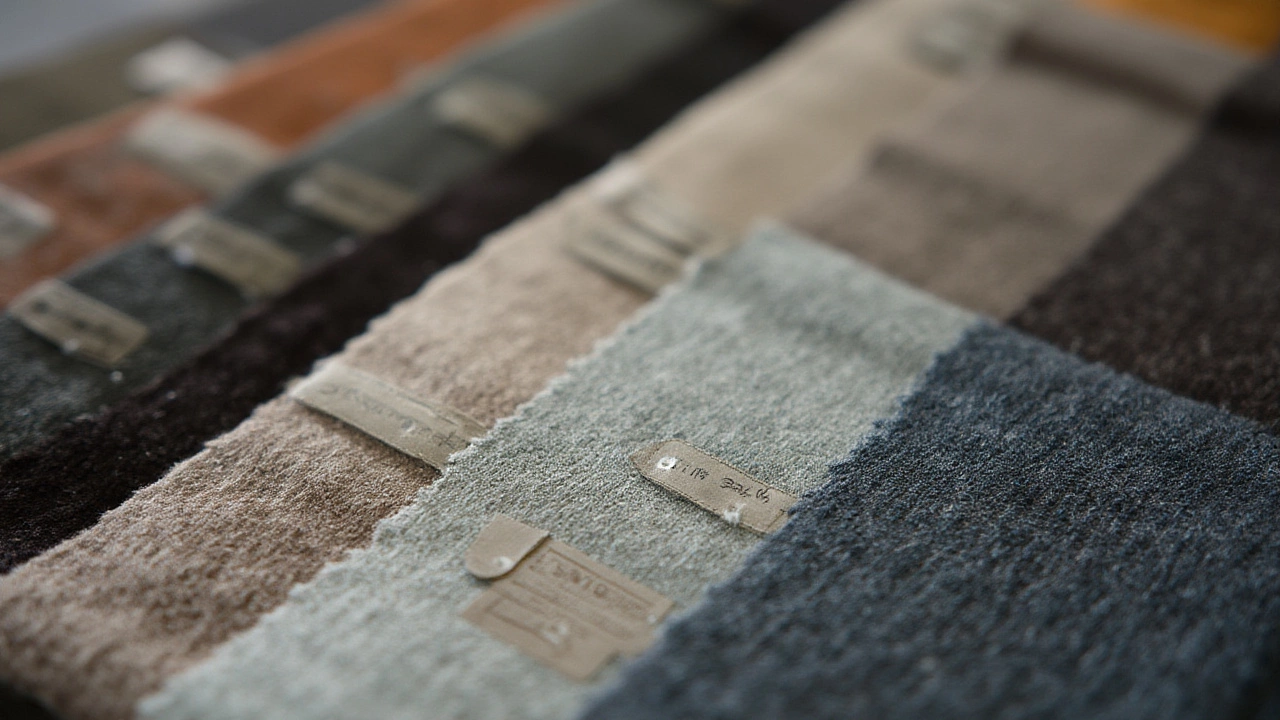Is It Worth Buying an Expensive Sofa? Comfort, Durability & Style Explained
 Jul, 22 2025
Jul, 22 2025
I’ve seen more spilled wine and sagging seat cushions than I care to admit, and I’ll tell you something wild—not all sofas wear their price tag well. A $400 couch can disappoint in weeks, and that designer piece might outlast your TV, your carpet, even your dog. The price spread in sofas is all over the map, from fast-furniture bargains you assemble with a tiny Allen key, to Italian-made velvet marvels you’ll want to pass down. But is shelling out a fortune really worth it? Or is it just paying for a brand name and a little Instagram swagger?
What Really Drives Up the Price of a Sofa
You’ve probably wondered what makes one sofa worth $399 and another over $5,000. Here’s the real breakdown. Expensive sofas often have hardwood frames—think kiln-dried maple or oak—while cheap ones rely on particleboard or MDF. Sturdy frames won’t warp over time, so the shape doesn’t get weird or wobbly. The next biggie is the suspension system. Top-tier sofas use eight-way hand-tied springs—a fancy but effective web of coiled springs tied in all directions—giving you bounce and support for decades. Mid-range and cheap models make do with sinuous wire springs or even nothing but foam, which sags surprisingly fast.
Cushion filling is another area where things get very real, very quick. High-end couches don’t just use basic foam; they pack in high-density foam wrapped in down feathers or premium fibers. It’s that sink-in, get-up-feeling-fresh vibe. Entry-level sofas skip the upgrades and just go with lightweight foam, and when you feel that pancake effect after a few months—you’re already Googling the next one. Upholstery matters too. A luxury brand sources Italian leather or heavy-duty woven fabrics tested for tens of thousands of ‘rubs,’ a measure of durability. Cut costs here and you’ll see early fraying, stains you can’t lift, or color fading from sunlight in less than a year.
Even assembly plays a part. The pricier brands often offer hand-finished legs, high-quality fasteners, and real attention to stitching and details. Mass-produced sofas rely on glue, weak joints, and short-cuts that can literally come apart at the seams. Want a quick peek at how your next sofa will survive a few years? Flip it over in the showroom. If you see unfinished wood and cheap staples everywhere, that tells you everything you need to know.
The Real-World Longevity of Expensive vs. Cheap Sofas
Ask anyone who’s lived with both kinds of sofas, and they’ll tell you—the difference in lifespan is massive. Upholstered furniture industry surveys show that the average lifespan for a cheaply made, mass-produced sofa is about 3-5 years. After that, most people report sagging cushions, creaky frames, and fabric that just can’t cope. Now, high-quality sofas? Those can last 15 years or more with normal use, and sometimes with minor repairs or re-upholstery, you’ll see them pass down through a family. That’s not hype. I’ve visited homes with vintage sofas that have seen more life than most houseplants and still steal the show.
Let’s put this side by side. Here’s an honest comparison you might find useful:
| Feature | Low-End Sofa ($400-900) | High-End Sofa ($2000+) |
|---|---|---|
| Frame Material | Particleboard/MDF | Kiln-dried hardwood |
| Cushion Fillings | Low-density foam | High-density foam and down/feathers |
| Suspension System | Sinuous springs or none | Eight-way hand-tied springs |
| Fabric/Upholstery | Synthetic blends, low abrasion rating | Natural fibers, leather, high abrasion rating |
| Lifespan (average) | 3-5 years | 15+ years |
But it’s not all about longevity. Comfort really is king. Good sofas are the MVPs when you want to binge a series or take a nap on a slow Sunday. With the right seat depth and rise, you’ll stop thinking about back pain altogether. Most people don’t realize this—cheaper sofas cut corners on ergonomic design, sometimes resulting in awkward, too-sloped backs or shallow depths that don’t support you. When friends crash overnight, guess where they want to sleep? Hint: not on the cheaper sofa.

Hidden Costs and Unexpected Benefits of an Expensive Sofa
Here’s a curveball: sometimes going cheap is the more expensive move. If you’re replacing a $500 sofa every 4 years, in 16 years you’ll have spent $2,000. A high-end sofa, maybe $2,000 upfront, might breeze through those same years, and you could even get a chunk of that back if you resell it. High-end couch brands like Flexform, Ligne Roset, or even classic Chesterfields often keep good value on the second-hand market, especially if you keep them clean. There’s a segment of furniture flipping these days where people hunt for vintage, quality couches to refurbish and resell for a tidy profit—or just a sofa that’s got character without the bank-breaking bill.
Let’s talk health. Cheaper sofas often use lower-grade materials with more adhesives or chemical finishes. That ‘new sofa smell’ is off-gassing of volatile organic compounds (VOCs). With premium sofas, you’re more likely to get ethically sourced wood, natural latex foam, or greener textiles, which cuts down on those sketchy smells and might even help with allergies. It’s not all sunshine, though. Some high-end brands still use synthetics or glues, so if you’re sensitive, make sure to check their environmental and safety certifications before swiping your card.
Plus, there’s some real benefit if you move a lot. High-end couches can often handle being taken apart and reassembled without damage. Anyone who’s tried to shift an IKEA sofa up a twisty stairwell knows the pain—wobbly arms, split joints, scuffed sides. With better-made sofas, modular construction and solid joinery make moving a breeze. If you end up in a new place every two years, that’s a bonus worth thinking about.
- Tip: Always check if your sofa has a removable, washable cover—premium or not. Stains are the most common reason people ditch old sofas prematurely.
- Fact: High-quality sofas are legally required to pass stricter fire safety standards in many countries. Not a sexy topic, but real peace of mind.
- Pro tip: Some high-end brands offer lifetime or 10-year warranties. Take advantage of these—they can save you a bundle down the road.
Should You Buy an Expensive Sofa—or Not?
This is a personal decision, but it boils down to a few main questions. How much are you really going to use this couch? Is it going to be the focal point of movie nights, family hangouts, or your personal afternoon nap haven? Or are you traveling light, switching apartments every two years, or kitting out a short-term rental? If your sofa will see heavy, daily use—and you want it to last—you really get value from investing in something built to last, something with better materials, comfort you notice, and a look that doesn’t go out of style in a year.
That being said, don’t overspend just for the label. Style is subjective and often overpriced. Some brands charge an arm and a leg for tufted velvet, and honestly, you can find gorgeous, sturdy sofas from under-the-radar local makers or direct-to-consumer startups for half the price. Read material lists, ask about abrasion ratings (how well the fabric holds up), and—here’s a tip not enough people use—sit, recline, and even lie down on showroom models for at least ten minutes. The salesperson might think you’re camped out, but you’ll know how it really feels. And if you’re shopping online, comb through verified reviews, stay away from sketchy sellers, and make sure there’s a return policy in case your living room vision doesn’t measure up.
Some families have a ‘no food or drink’ rule on their expensive couch. It might sound strict, but it pays off. Others cover their high-end sofa with throws or slipcovers when having a crowd over or during kids’ birthday parties. That’s not overkill—it’s just making a big investment last longer. But maybe you have little kids, pets, or a roommate prone to clumsy spills. In that case, you honestly might be better off with a more affordable pick and an eye on the exit plan.
Bottom line? A sofa is the unsung hero—and the unsung money pit—of most homes. If comfort, durability, and long-term economy matter, an expensive sofa makes sense. If flexibility, changing tastes, or rowdy lifestyles win out, hold back and shop smart. As with everything, the *strongest* move is knowing exactly what you want for your lifestyle—and getting as close to it as your budget can stretch. The perfect sofa isn’t just a seat. It’s where half your memories are made. Buy like you mean it, and either way, you’ll rest easy.